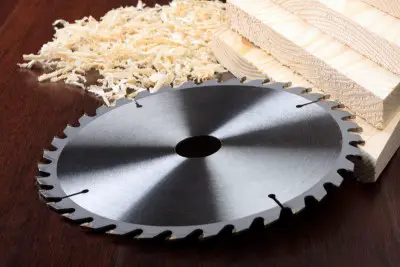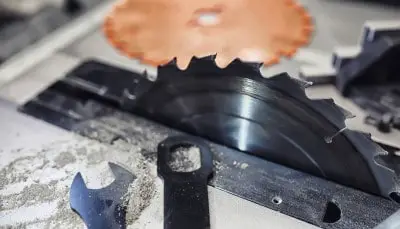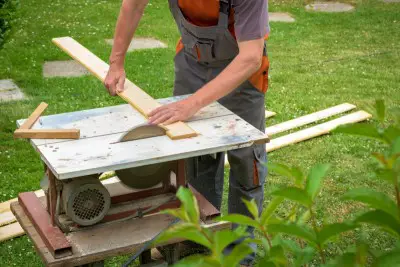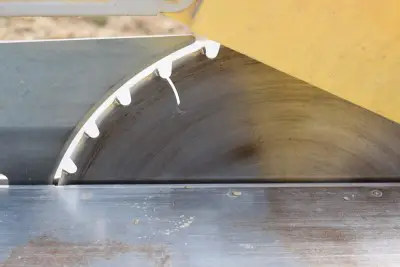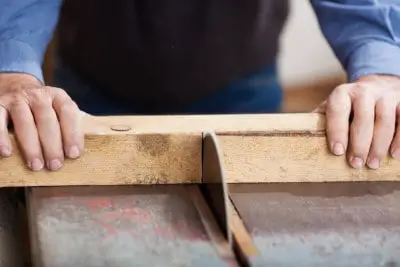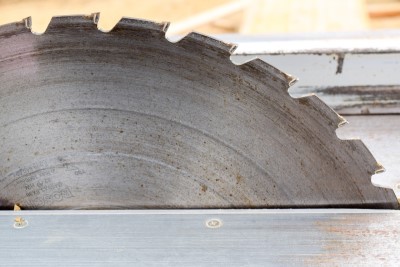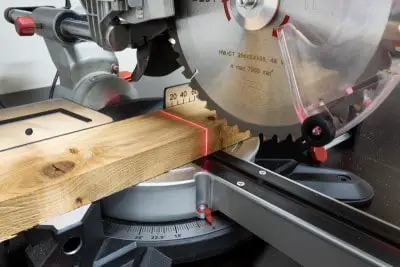If you’re a woodworker, you’re probably familiar with dado blades and the amazing grooves they can make in wood for jointing purposes. However, have you ever considered using a dado blade on an angle?
Dado blades are typically used on a table saw to make grooves in wood for joining purposes. They are not designed to be used on an angle. The blades are designed to be used vertically, with the material being passed through the blade on a flat plane. Using a dado blade on an angle would likely result in an uneven or poorly cut groove, and could also be dangerous.
Don’t worry though, there are plenty of other tools out there that are perfect for making angled cuts. So, let’s dive in and explore what you need to know about using a dado blade on an angle.
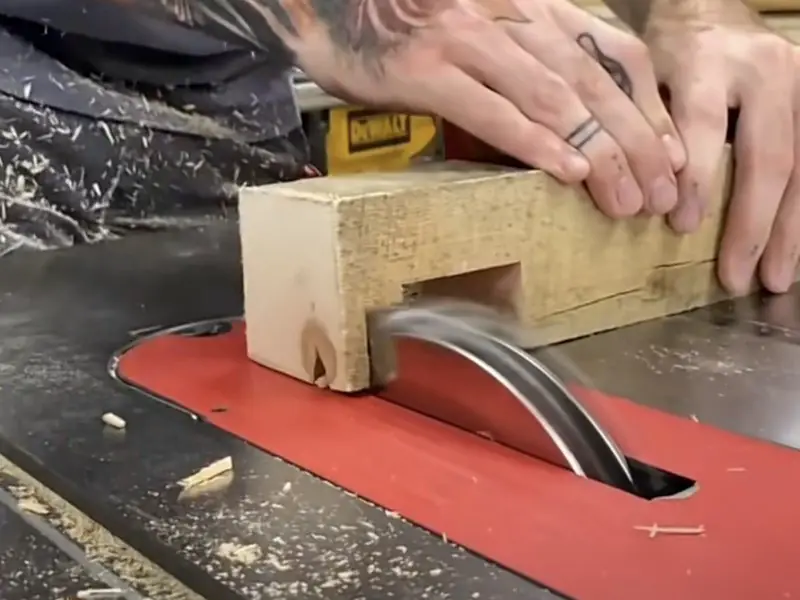
Why You Can’t Use Dado Blade On an Angle?
Dado blades are designed to make grooves in wood for jointing purposes, and they are best used vertically. When used on an angle, the blade may not cut evenly, resulting in a poorly cut groove.
Additionally, using a dado blade on an angle can be dangerous as it increases the risk of kickback, which is when the material being cut suddenly jumps back toward the operator. This can cause the operator to lose control of the saw and potentially cause injury.
The flat bottom of the dado blade is also not designed to make angled cuts, which can result in a poorly finished surface.
Risks of Using a Dado Blade on an Angle
Using a dado blade on an angle can pose several risks, including:
- Uneven cuts: When used on an angle, the dado blade may not cut evenly, resulting in a poorly cut groove that may not fit together as intended.
- Kickback: Using a dado blade on an angle increases the risk of kickback, which is when the material being cut suddenly jumps back toward the operator. This can cause the operator to lose control of the saw and potentially cause injury.
- Poor surface finish: The flat bottom of the dado blade is not designed to make angled cuts, which can result in a poorly finished surface.
- Damaged blade: The blade may become damaged due to the increased stress placed on it when used at an angle. This can result in a need for costly blade replacement.
Alternatives for Angled Cuts
Miter Saw
A miter saw is a better option for making angled cuts compared to a dado blade for several reasons:
- Precision cuts: Miter saws are designed for making precise angled cuts, ensuring that the cuts are accurate and clean.
- Safety: Miter saws have safety features, such as guards and fences, that help to prevent kickback and other dangerous scenarios.
- Versatility: Miter saws can be adjusted to make cuts at a variety of angles, making them a versatile tool for angled cuts.
- Consistency: Miter saws are equipped with laser guides or digital displays, which help to ensure consistency in cuts.
- Ease of use: Miter saws are user-friendly and easier to use compared to a dado blade, especially for angled cuts.
Radial Arm Saw
Similar to the Miter saw, the Radial arm saw is also more suitable for angled cuts:
- Precision: Radial arm saws are engineered for precise angled cuts, ensuring a clean and accurate cut every time.
- Safety: Radial arm saws are equipped with safety features, such as guards and fences, to minimize the risk of dangerous scenarios, such as kickback.
- Versatility: Radial arm saws can be adjusted to make cuts at a variety of angles, making them a versatile tool for angled cuts.
- Consistency: The use of laser guides or digital displays on radial arm saws ensures consistency in cuts.
- Large workpiece capacity: Radial arm saws have the capability to accommodate larger workpieces, making them a more suitable option for cutting large pieces of wood compared to a dado blade.
Other Cutting Tools Suitable for Angled Cuts
Jigsaw: A jigsaw is a versatile cutting tool that can be used to make angled cuts in wood. It is a handheld tool that allows for precision cuts in tight spaces.
Band saw: A band saw is a powerful cutting tool that can be used to make angled cuts in wood. It is equipped with a continuous blade that allows for smooth and precise cuts.
Circular saw: A circular saw can be used to make angled cuts by adjusting the angle of the blade. It is a portable tool that is suitable for making cuts on the job site.
What You Can Do With Dado Blade
A dado blade is a cutting tool that can be used to make grooves in wood for a variety of purposes, including:
- Joining: Dado blades are commonly used to make grooves in wood that are used for joining two pieces of wood together. This is often done in cabinet making and furniture construction.
- Decorative purposes: Dado blades can be used to create decorative grooves in wood that add interest and texture to a project.
- Dadoes for shelves: Dado blades can be used to create dadoes (grooves) in the sides of a cabinet or bookcase to hold shelves in place.
- Rabbeting: Dado blades can be used to make rabbets (recessed grooves) on the edges of boards for decorative purposes or for attaching pieces of wood together.
- Tongue and groove joints: Dado blades can be used to create tongue and groove joints, which are commonly used for flooring, paneling, and cabinetry.
Read more:

